When the base or roots of a tree start to decay, they pose a risk. The larger the tree, the greater the threat it becomes.
You can save a rotting tree, but it will depend on the location and extent of the rot. A large amount of rot at the base of a trunk is a concern as the structural integrity of the tree is compromised. Isolated rot on branches can be removed.
Having multiple rotting trees and plants in your yard will most likely be a drainage problem.
We tackle the ins and outs of saving a tree from rot step by step below.
What we cover
ToggleHow do you save a rotting tree?
You can save a tree with a rot problem. How you go about it will depend on whether you are dealing with trunk or root rot.
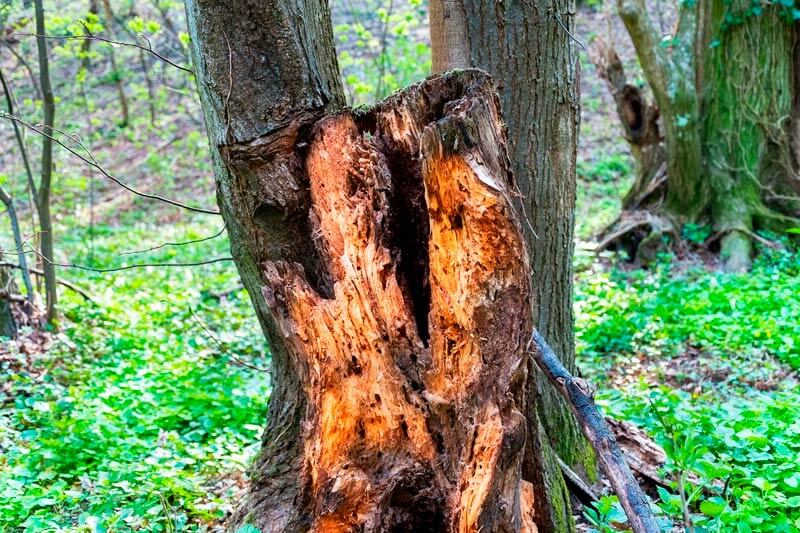
How do you save a tree with trunk rot?
You can save the tree1 if it hasn’t been severely affected.
To save it, all you have to do is to give the tree a better chance of fighting off the disease on its own.
Essentially, you have to do two things:
- reduce any stress that the tree is under
- take steps to ensure that it is healthier and that it has a better chance of healing itself.
Reduce stress
Anything that puts stress on healthy trees increases their odds of succumbing to the decay fungus. Therefore, as soon as you notice rot signs, you should:
- Water the tree if it is in a dry area
- Spray it with pesticides if it is infested by ants, termites, or other pests
- Prune its branches if it has a lot of dead branches or diseased limbs
Plant health care
In addition to eliminating things that subject the plant to undue stress, you need to take steps that generally help to keep trees healthy. Doing so will ensure that it has the resources that it needs to effectively combat wood decay.
To this end, you will need to do the following.
- Water it to guarantee better food production and overall health
- Fertilize it with phosphorus fertilizer or any other health-promoting fertilizer that a tree professional will recommend to ensure that the tree thrives
- Prune dead branches or decaying branches to ensure that the plant doesn’t waste away resources
- Improve soil conditions around the tree to reduce the odds of other tree diseases like root rot. Solving poor drainage and improving soil pH will also go a long way toward ensuring that the tree is healthy enough to fight back against rot.
How do you treat root rot?
You can treat a tree with root rot if:
- The root rot isn’t widespread
- Even if the fungal growth is widespread, the condition isn’t severe enough to a point where it has affected the tree’s foliage.
Here are the steps that you should follow if you want to save your tree from tree rot.
Step 1: Dig
Start off by digging around the tree. When doing so, take care not to injure the tree’s root system. Do so until you are able to remove the tree with a significant chunk of its root crown still intact.
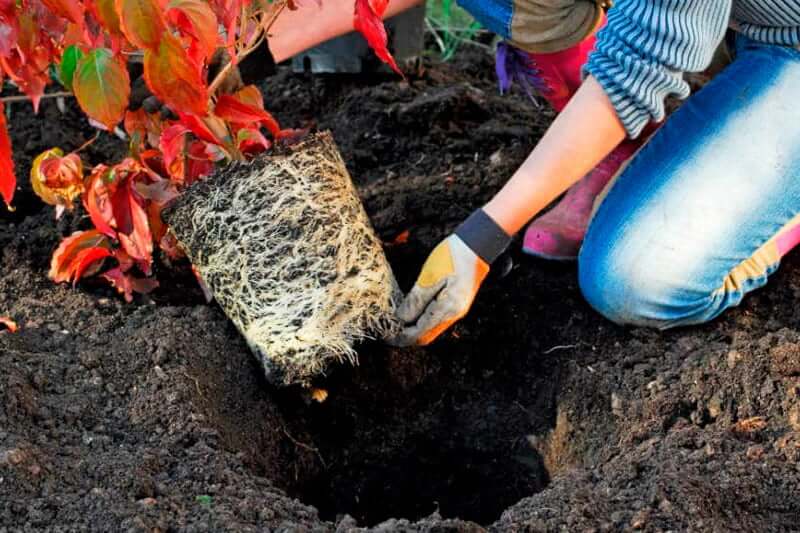
Step 2: Rinse
The next step is to remove dirt from the root system. You do this in order to make it easier for you to identify areas that have been affected by the rot.
In most cases, using a garden hose to spray the root ball with clean water is usually enough to rinse off mud and dirt from the root ball.
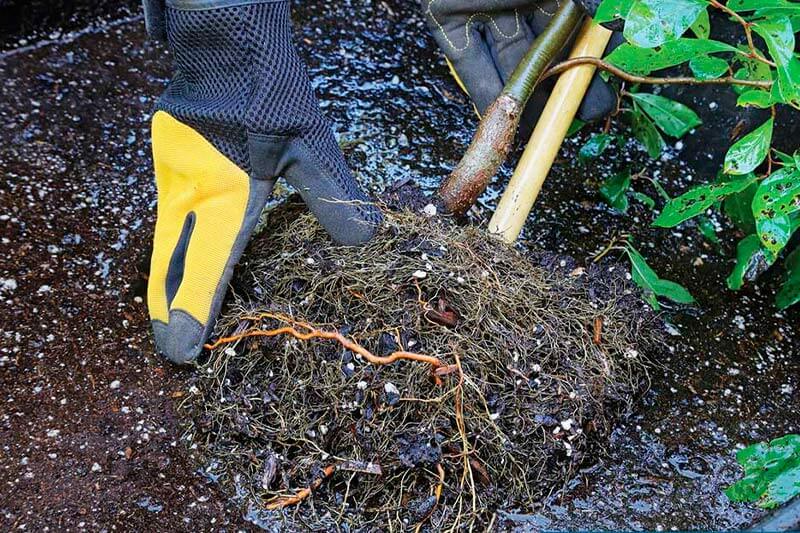
Step 3: Cut
After rinsing the tree’s root system, it will be easy to see and point out the affected sections. Cut these areas off.
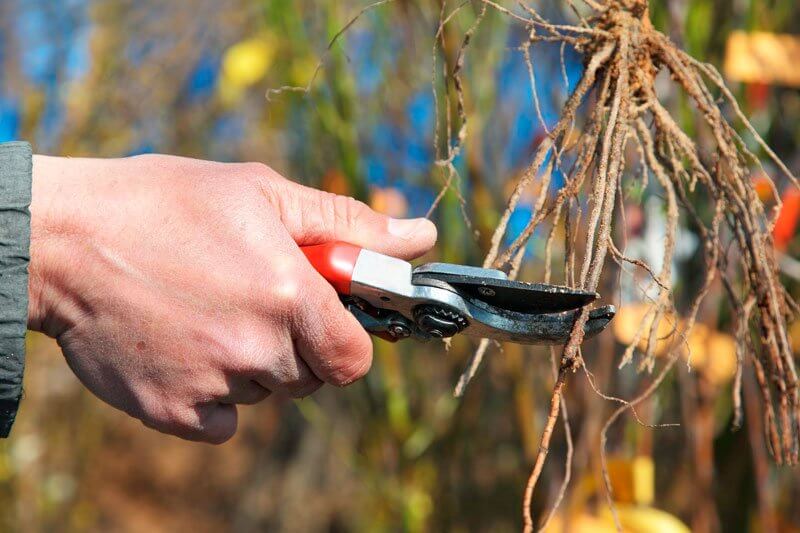
Step 4: Treat
Cutting off the affected sections is not enough.
If you want to keep the remaining sections of the root system free of any rot, you need to treat them. A fungicide is the best treatment for this, and, therefore, you should use it.
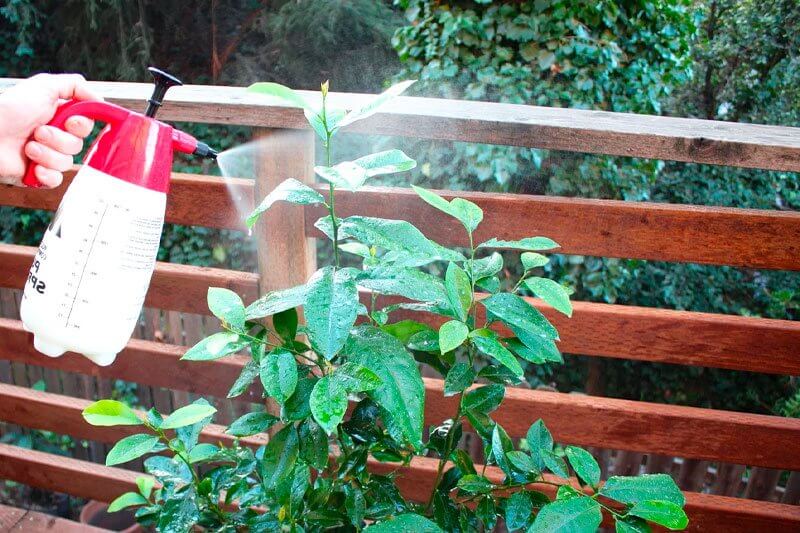
Step 5: Replant
In most cases, root rot is caused by poor soil conditions — that encourage root decay. Therefore, if you want to guarantee that your tree will be safe from the damaging effects of root rot, replanting it in an area with loose and well-aerated soil is recommended.
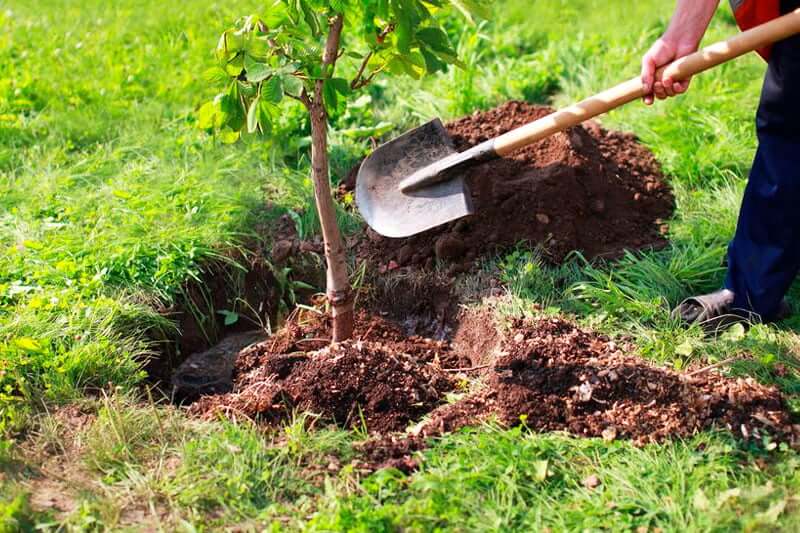
Note
Larger trees will be a little bit more challenging to deal with. They are larger in size, they tend to have deeper roots, and they aren’t easy to replant.
As a result, the task of diagnosing and treating them for root rot should always be left to tree specialists. They are more equipped to handle the careful digging, skillful administration of fungicides for killing off fungal infections, and eventual soil treatment that is necessary to both cure and prevent tree rot.
Another thing that you should do is to rinse your pruning equipment and any other gardening tools that you may use to cut off the infected sections, with diluted bleach. You should do this in order to reduce the odds of contaminating other trees with dangerous fungal spores.
What are the different types of tree rot?
A tree rot occurs when a fungus attacks a tree. The resultant effect of this attack is that the tree starts to decay. This decay process can happen in three unique ways, and hence the different types of rot.
Soft rot
Soft rot is characterized by a slowed-down decaying process that can be caused by either a bacterial or fungal infection. It is generally considered to be a mild attack especially since it tends to cause the least harm to a tree’s structure.
White rot
White rot is a type of rot that leaves a tree feeling spongy to the touch. Such an attack is also characterized by the moistness of a tree’s wood. And it is considered to be a serious form of decay.
Brown rot
This is a form of tree rot that is considered to be the most dangerous to a tree’s health and survival. When a tree suffers from this rot, it tends to dry out, decay, and crumble.
Signs of root rot
It is possible to treat a tree that has root rot. However, if you want a better shot at saving your tree, you need to know the early signs of tree rot.
Here are the most common ones.
- Decaying branches
- Generally weak branches
- Leaves that are smaller and thinner than normal
- A thinning canopy
- Leaves that are gradually turning brown or that are wilting
The only sure way to diagnose root rot
Unfortunately, knowing these signs is rarely enough to tell for certain whether what your tree is suffering from is root rot. This is because root rot shares a lot of symptoms with other common tree diseases.
Therefore, the only way to be certain that what you are dealing with is a root rot problem is to contact a tree expert.
Letting a certified arborist examine your tree is the only way to diagnose a tree rot for certain. The arborist will most likely have to dig around the tree in order to inspect the tree’s roots.
What are the symptoms of a dying tree?
Dead or dying trees are dangerous.
They have a higher risk of falling.
They can injure passersby, cause serious damage to property, and even injure other trees in their vicinity. Therefore, identifying them as early as possible is a reliable way of avoiding injuries and property damage.
Early detection can also give you a chance to save the dying or dead tree before it is too late. This makes knowing the signs of a dead or dying tree important.
Here are the most common ones.
- A failed scratch test whereby after scratching its bark, a brown cambium layer is exposed
- A loose or falling bark.
- Deep cracks on a tree’s bark
- An overwhelming presence of dead wood
- Fungus infestations like mushrooms growing at the base of the tree
- The tree displays an odd growth pattern like developing a lean — whether sudden or not.
- Constant attacks by carpenter ants and bark beetles
Can you save a dying tree?
Yes, you can save a dying tree.
However, your odds of success will largely depend on the reason why it is dying, how severe the condition is, and the species of the tree in question.
Factors like soil condition and availability of moisture, also play a significant role in determining whether a dying tree can be saved.
One of the first things that you should do when it comes to fixing a dying tree, is to find out why exactly it is dying.
The following are the major causes of trees dying, and which might be to blame for your tree’s problems.
- Poor soil drainage causes excessive moisture. This is a major cause of root rot, a condition that normally results in the death of trees especially when they are still young.
- Too much mulch at the base of a tree’s trunk is also a common cause of tree health problems. It increases the odds of the tree ending up with rotten wood. It also encourages fungal, bacterial, and insect infestations. All of these things can end up killing a tree.
- When fertilizer is applied directly to a tree’s roots, it can burn the roots. This can kick off a dying process that can end up killing the tree.
- Some trees die simply because they become infected with a deadly tree disease.
How do you save a dying tree?
You save a dying tree by:
- fixing the source of the problem
- creating conditions that boost a tree’s chances of recovery
Keeping these two points in mind, the following are the main ways through which you can save a dying tree.
Prune diseased limbs and branches
Some diseases spread gradually throughout a tree’s structure. And the more they spread, the more the tree gets negatively affected.
In such cases, cutting off the diseased parts of the tree can end up saving the rest of the tree. This is so because it will effectively get rid of the source of the disease and thus minimize the risks of fungal spores spreading to the rest of the tree or other plants.
Remove mulch from the base of the tree
Removing mulch from the base of a tree can also save it from dying. This is because the presence of mulch can encourage insect and pest infestation. It can also lead to root rot and other incidental problems.
Therefore, by creating enough space between the mulch and the base of the tree, you can relieve the tree from the stress that comes with having mulch at its base. This can go a long way towards improving the odds of the tree surviving.
Watering and applying fertilizer
Trees need moisture and nutrients in order to survive. These resources can also help them to develop stronger defense mechanisms against diseases and infections.
However, both fertilization and watering need to be done properly. This is because excess moisture can sometimes encourage root rot. And using the wrong fertilizer can lead to poor tree health.
Using the right fertilizer and applying it correctly will help to save a tree from continued rotting. It will save its roots from chemical burns. And it will also reduce the prevalence of bacteria, fungi, and other harmful organisms that may find over-fertilized soils attractive.
Use specific mineral-rich fertilizer
Using fertilizers that are rich in minerals that promote root growth is also an effective way of saving a tree from death.
A good example of such a mineral is phosphorus. When you enrich the soil around the tree with phosphorus, you will encourage new root growth. This will in turn ensure that the tree will have access to more resources, something that will go a long way towards boosting the tree’s chances of surviving.
When is tree removal a better option?
Tree removal is always recommended in cases where the rot is so severe that it has affected the structural integrity of the tree, or it has affected the entire plant. This includes cases where the tree is considered to be a danger to the public.
Generally, the most common sign that a tree is beyond saving is when fruiting bodies start appearing on the tree. Other common signs of a tree that is rotting inside like the presence of mushroom-like growths can also be an indication that removal is necessary.
Therefore, as soon as you notice fruiting bodies on your trees, you should think about tree removal as trying to save the tree is likely pointless.
FAQ's
No, a rotting tree is not dead.
It is simply a tree that has decaying parts. And in most cases, a tree with rotten limbs or branches survives. It can even survive on its own.
And in cases where the rot is spreading, pruning, watering, fertilization, and improving soil conditions, can help the tree to not only avoid further decay but also recover from the rotting wood disease.
However, severe cases of root or heart rot can be an indication that the tree is already dying and that it is just a matter of time before it is completely dead.
A tree that has heart rot or any other type of rot can be saved if the condition is still in the early stages. In most cases, saving it involves bettering the tree’s health so that it can heal itself.
What you should do is to water the tree, fertilize it, and then prune it.
In the case of root rot, in addition to improving soil conditions, watering, and fertilization, you may need to cut off the affected sections of the tree’s root system. After that, spraying the roots with a fungicide before replanting it, is recommended.
However, in cases where the rot is severe, then tree removal is often the best course of action. And if you are dealing with large trees, like a great shade tree, this is work that is best left to a tree specialist.
Yes, a tree with a root rot disease can be saved.
It can be saved by first digging it out, rinsing it, cutting out the rotten parts, treating it with a fungicide, and then replanting it. For larger trees that can’t be easily dug out, like a large oak tree or other mature trees, it is always recommended to let a tree specialist handle their digging and treatment.
However, not all root rot cases can be solved. In some cases, the root rot can be so severe that the only option is to remove the tree.
If you need help saving a tree on your property, a professional service can come in handy.
GoTreeQuotes.com simplifies the process of finding a great tree service, and a free estimate, in your vicinity. It offers a free service that quickly matches you with the top-voted local tree experts in your area.
Using the website, you can get 3 estimates fast by real certified experts in your area in just 2 minutes. Here is how it works.
- You scroll to the top of the page and enter your Zip code.
- Answer questions about your tree
- Your details will be forwarded to three local experts.
- You will then receive a price estimate for the job and some friendly advice.
IMPORTANT: There is no obligation to hire. This is a free tool and service to be
- Davey Blog, (2022) Can You Repair or Stop a Tree Trunk From Rotting at the Base? <https://blog.davey.com/can-you-repair-or-stop-a-tree-trunk-from-rotting-at-the-base/> Accessed: 28-02-2024



